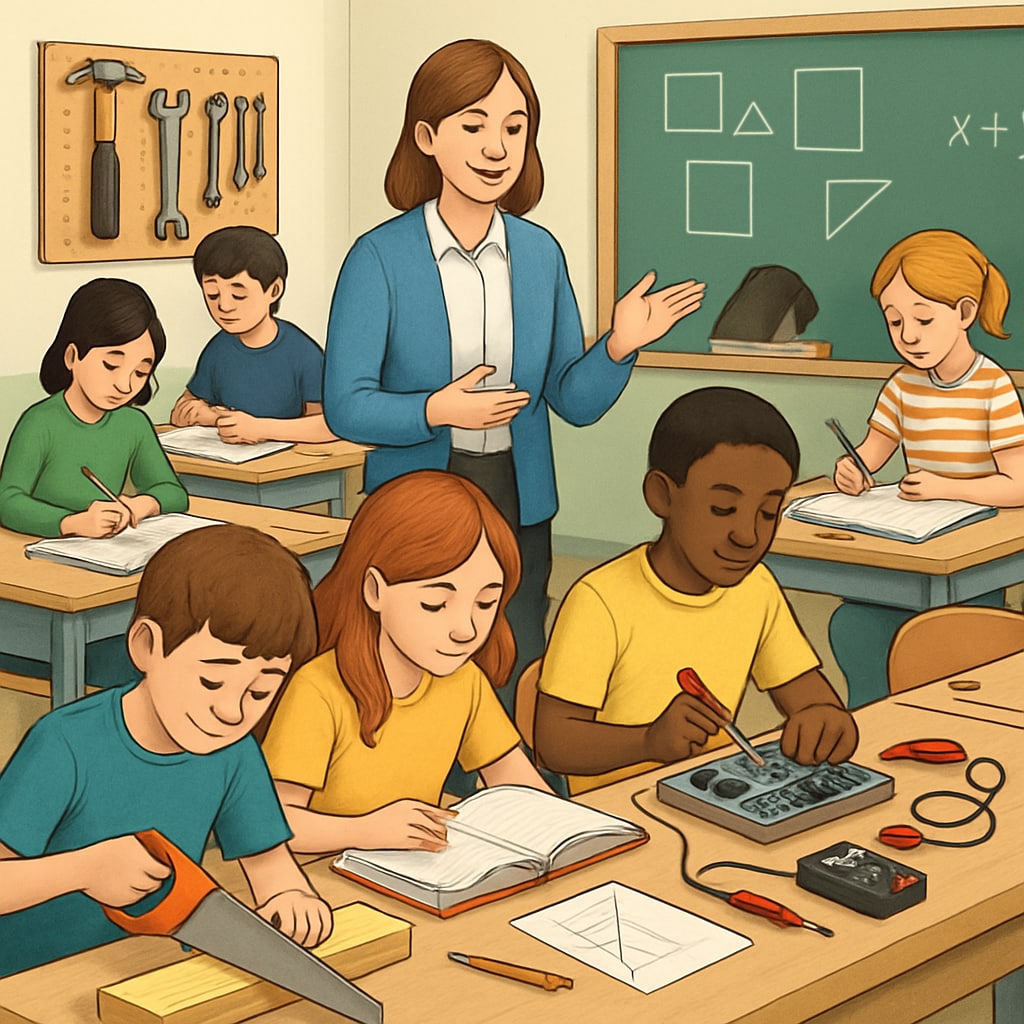In today’s K-12 education landscape, achieving a balance between vocational education, traditional subjects, and curriculum structure presents both opportunities and challenges. Educators everywhere are tasked with equipping students with practical skills while ensuring a solid foundation in academic disciplines. This article examines the complementary relationship between vocational education and traditional subjects, highlights examples of successful implementation in various school districts, and proposes actionable strategies for creating an integrated curriculum that fosters holistic development.
The Complementary Relationship Between Vocational and Academic Education
Vocational education focuses on equipping students with hands-on skills that directly prepare them for the workforce, while traditional academic subjects emphasize critical thinking, theoretical knowledge, and intellectual growth. These two approaches, although distinct, are not mutually exclusive. In fact, they can complement each other to produce students who are both workforce-ready and academically well-rounded.
For example, integrating engineering principles into mathematics classes or applying scientific concepts in trade-related courses like carpentry helps students see the practical applications of theoretical knowledge. A well-rounded curriculum enables students to connect abstract ideas with real-world applications, fostering both intellectual and practical competence.

Examples of Balanced Education Models
Several school districts around the world have successfully implemented integrated models that balance vocational education with traditional subjects. For instance, Germany’s dual education system combines classroom instruction with hands-on apprenticeships, providing students with both theoretical knowledge and practical experience. Similarly, in Finland, project-based learning encourages students to apply academic concepts to solve real-world problems, ensuring that vocational and academic learning reinforce each other.
In the United States, Career and Technical Education (CTE) programs offer another successful example. These programs align vocational training with academic standards, allowing students to earn industry-recognized certifications while completing their high school diploma. According to a 2020 report by the U.S. Department of Education, students enrolled in CTE programs were more likely to graduate on time and pursue higher education or gainful employment.
Strategies for Building an Integrated Curriculum
To achieve a balance between vocational education and traditional subjects, schools and educators can adopt the following strategies:
- Cross-Disciplinary Projects: Encourage collaboration between vocational and academic teachers to design projects that integrate skills from both areas. For instance, a project on renewable energy could involve physics, engineering, and environmental studies.
- Flexible Scheduling: Allow students to alternate between vocational training and academic classes. This ensures they gain equal exposure to both approaches without feeling overwhelmed.
- Industry Partnerships: Collaborate with local businesses and industries to offer internships and real-world training opportunities that complement academic learning.
- Teacher Training: Invest in professional development programs that prepare educators to teach integrated curricula effectively.
By adopting these strategies, schools can create a seamless learning experience that prepares students for both higher education and the workforce.

Challenges and the Way Forward
Despite the potential benefits, integrating vocational education with traditional subjects is not without its challenges. Resource constraints, rigid curriculum standards, and a lack of trained educators can hinder implementation. However, these obstacles can be overcome through strategic planning and collaboration among stakeholders.
For example, governments and educational institutions can allocate funding to support the development of integrated programs. Additionally, fostering a culture that values both vocational and academic achievements equally can change societal perceptions and encourage broader adoption of balanced education models.
In conclusion, balancing vocational education and traditional subjects requires a thoughtful approach that recognizes the value of both. By creating integrated curriculum structures, providing teacher training, and fostering industry partnerships, schools can equip students with the skills and knowledge they need to thrive in today’s dynamic world.
Readability guidance: This article uses short paragraphs, clear transitions, and actionable strategies to ensure accessibility. Be sure to adapt recommendations to fit local contexts and educational frameworks.


